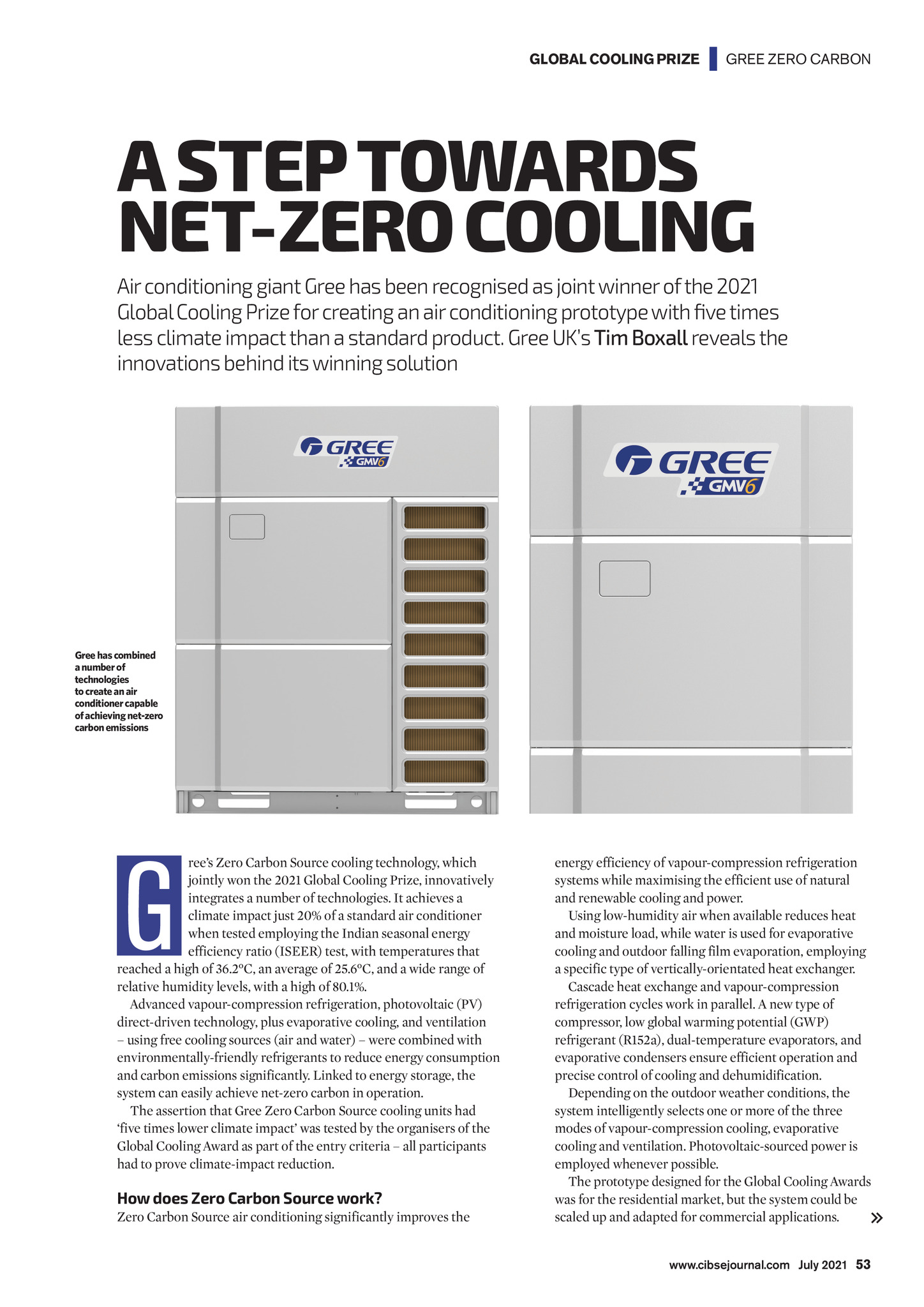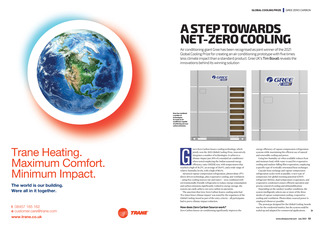


GLOBAL COOLING PRIZE | GREE ZERO CARBON A STEP TOWARDS NET-ZERO COOLING Air conditioning giant Gree has been recognised as joint winner of the 2021 Global Cooling Prize for creating an air conditioning prototype with five times less climate impact than a standard product. Gree UKs Tim Boxall reveals the innovations behind its winning solution Gree has combined a number of technologies to create an air conditioner capable of achieving net-zero carbon emissions G rees Zero Carbon Source cooling technology, which jointly won the 2021 Global Cooling Prize, innovatively integrates a number of technologies. It achieves a climate impact just 20% of a standard air conditioner when tested employing the Indian seasonal energy efficiency ratio (ISEER) test, with temperatures that reached a high of 36.2C, an average of 25.6C, and a wide range of relative humidity levels, with a high of 80.1%. Advanced vapour-compression refrigeration, photovoltaic (PV) direct-driven technology, plus evaporative cooling, and ventilation using free cooling sources (air and water) were combined with environmentally-friendly refrigerants to reduce energy consumption and carbon emissions significantly. Linked to energy storage, the system can easily achieve net-zero carbon in operation. The assertion that Gree Zero Carbon Source cooling units had five times lower climate impact was tested by the organisers of the Global Cooling Award as part of the entry criteria all participants had to prove climate-impact reduction. How does Zero Carbon Source work? Zero Carbon Source air conditioning significantly improves the energy efficiency of vapour-compression refrigeration systems while maximising the efficient use of natural and renewable cooling and power. Using low-humidity air when available reduces heat and moisture load, while water is used for evaporative cooling and outdoor falling film evaporation, employing a specific type of vertically-orientated heat exchanger. Cascade heat exchange and vapour-compression refrigeration cycles work in parallel. A new type of compressor, low global warming potential (GWP) refrigerant (R152a), dual-temperature evaporators, and evaporative condensers ensure efficient operation and precise control of cooling and dehumidification. Depending on the outdoor weather conditions, the system intelligently selects one or more of the three modes of vapour-compression cooling, evaporative cooling and ventilation. Photovoltaic-sourced power is employed whenever possible. The prototype designed for the Global Cooling Awards was for the residential market, but the system could be scaled up and adapted for commercial applications. www.cibsejournal.com July 2021 53 CIBSE July 21 pp53-54 Gree Global Cooling Prize.indd 53 25/06/2021 17:02